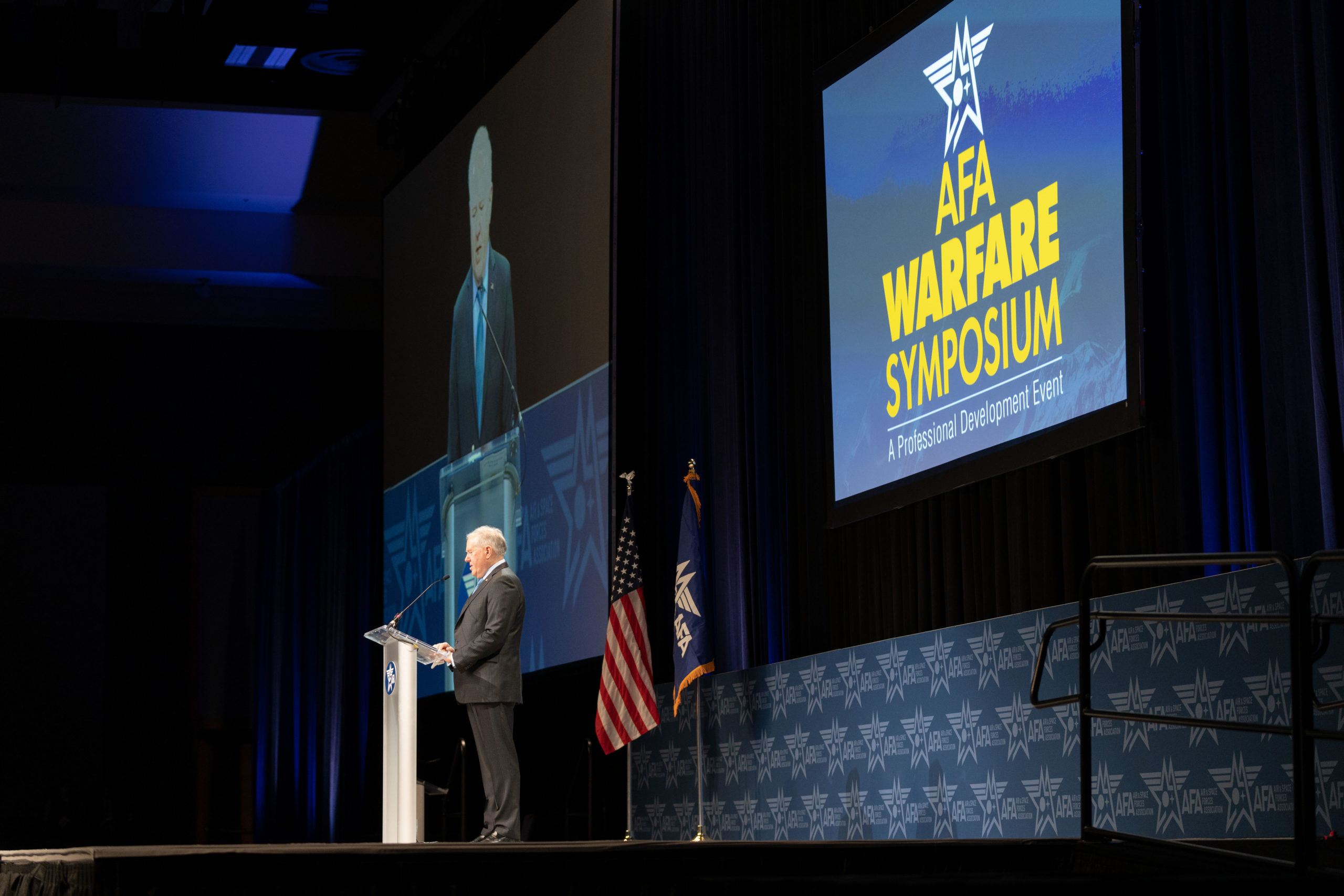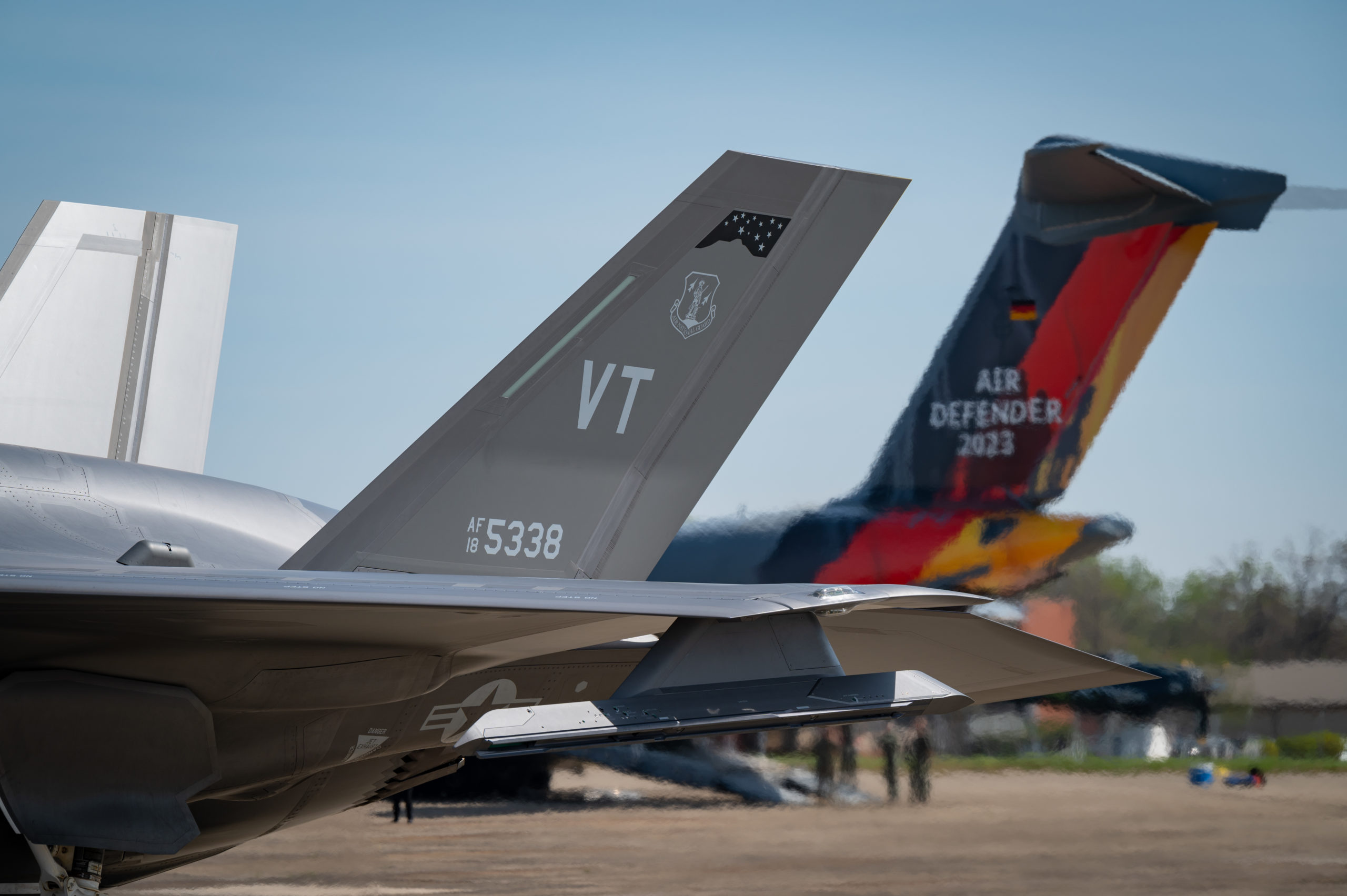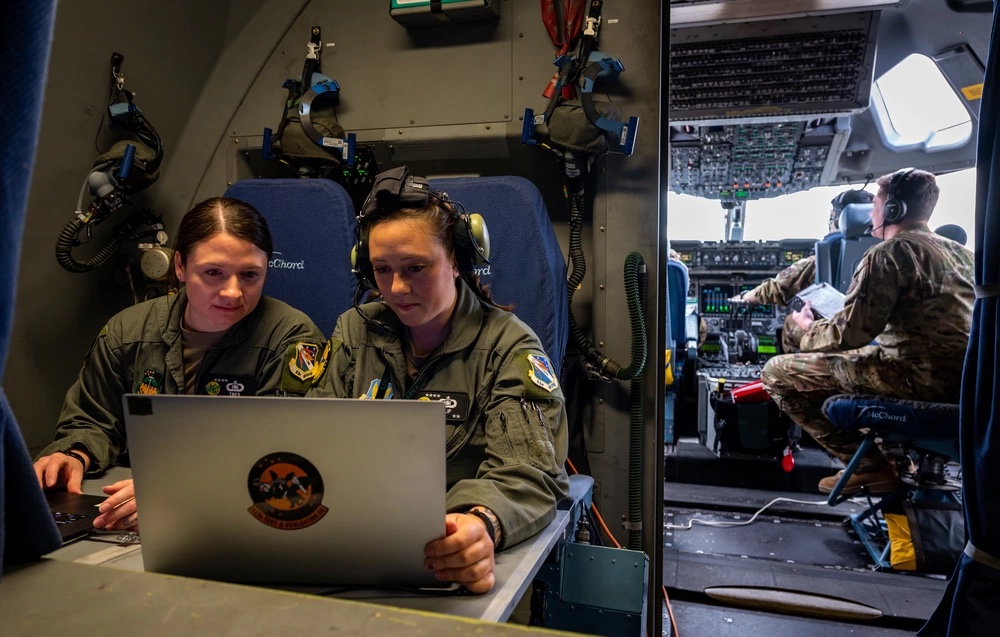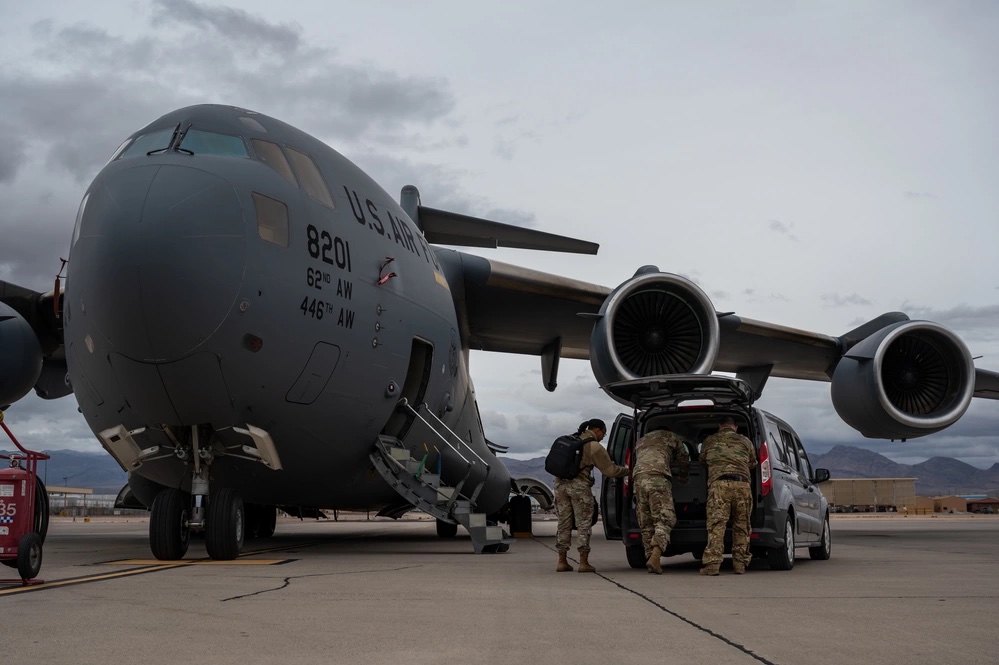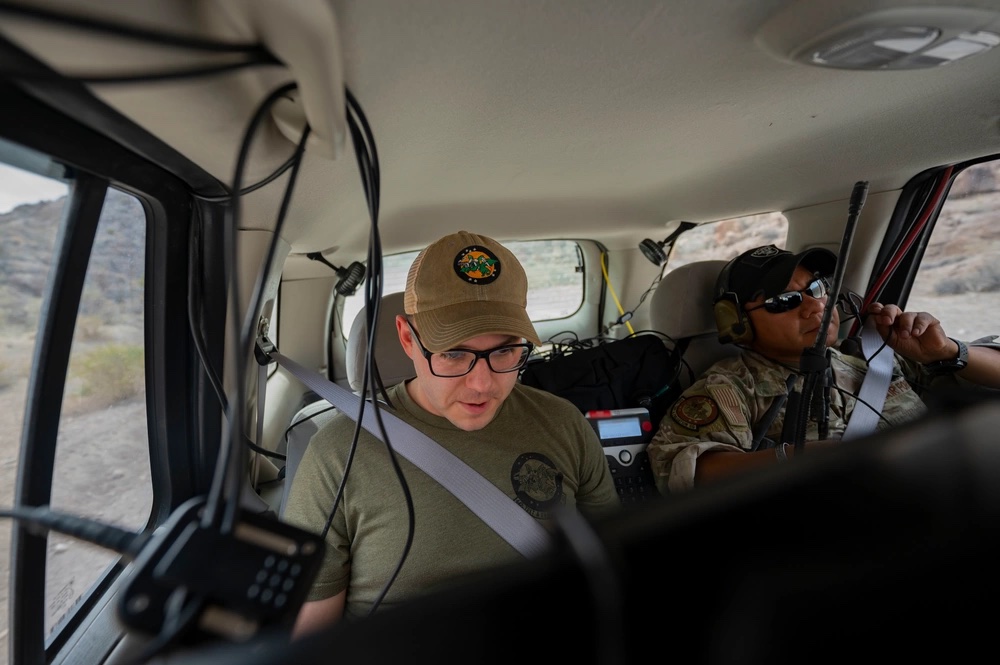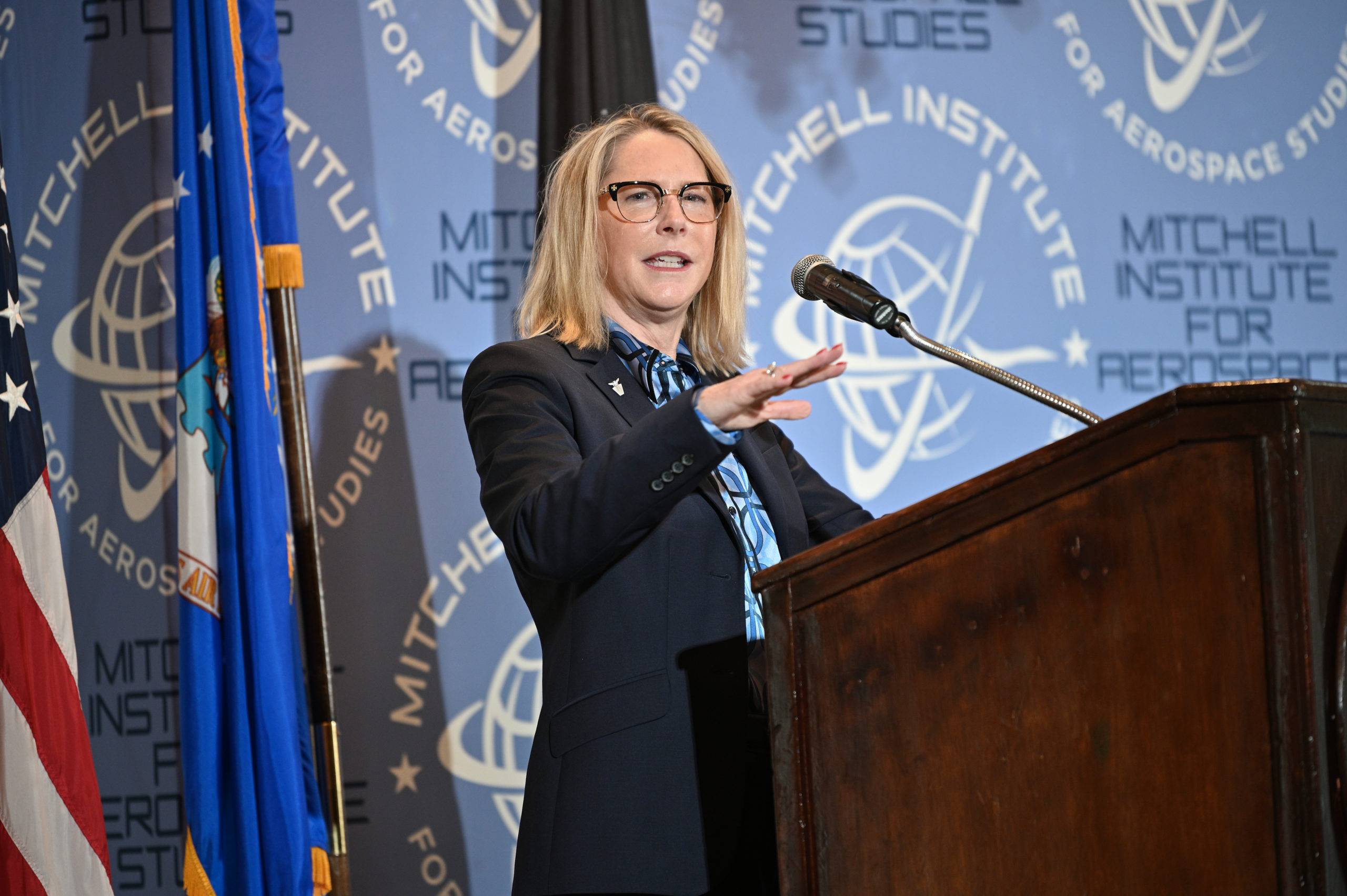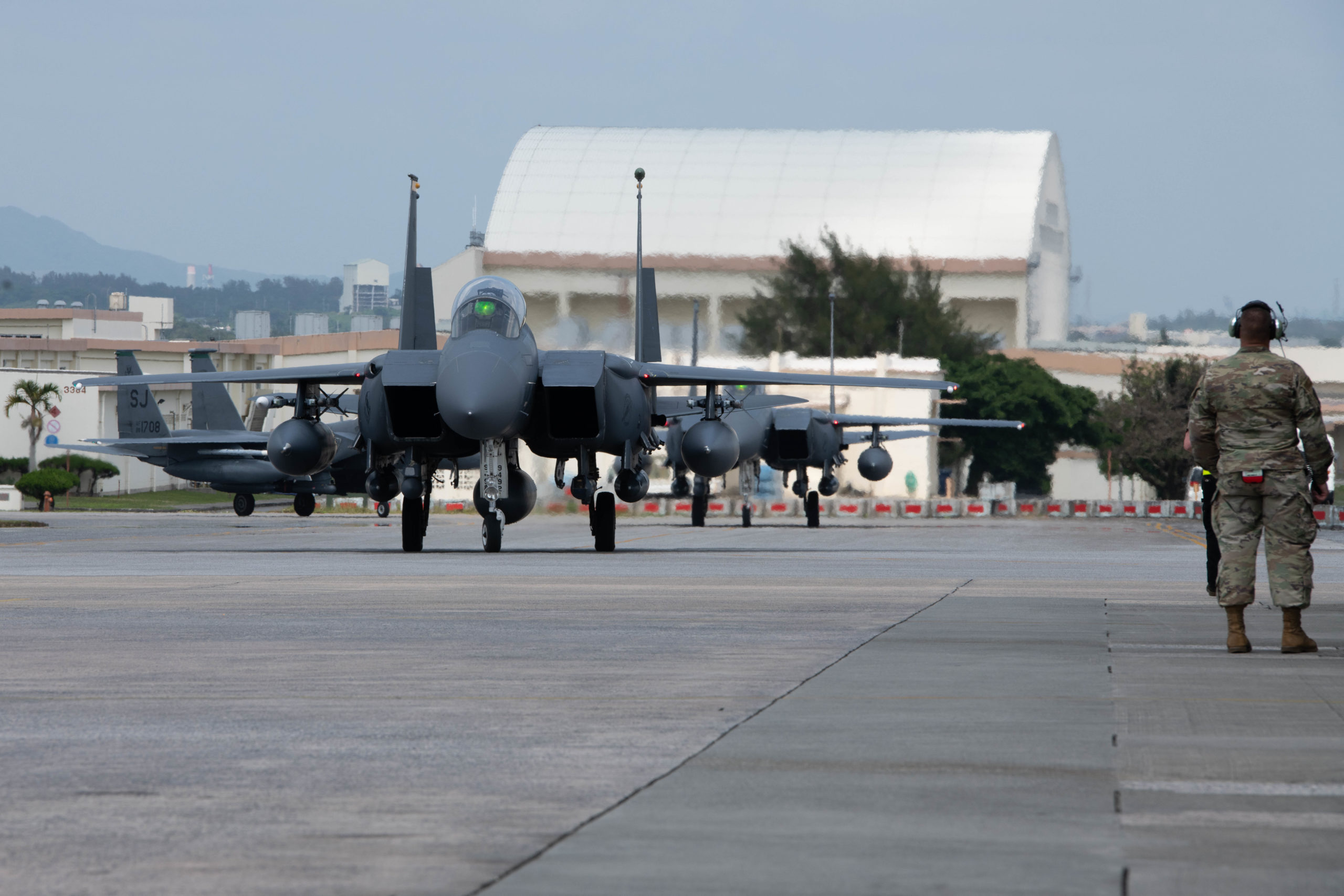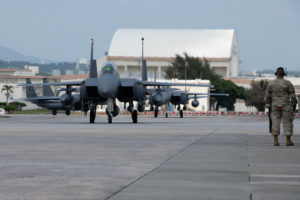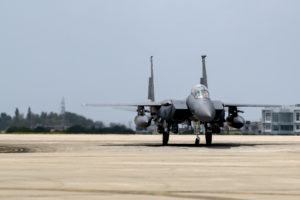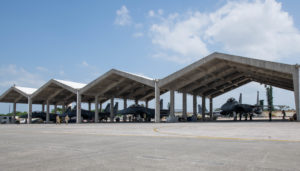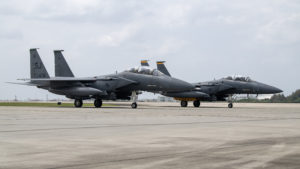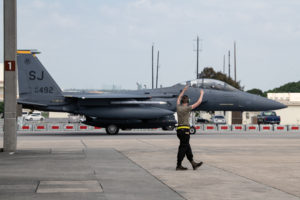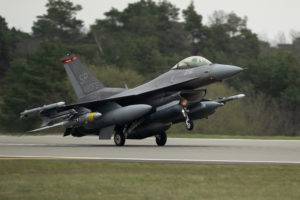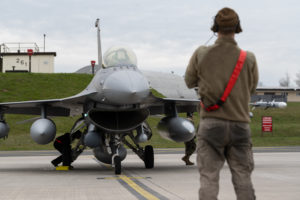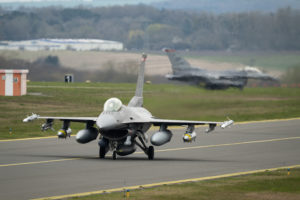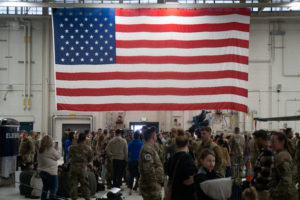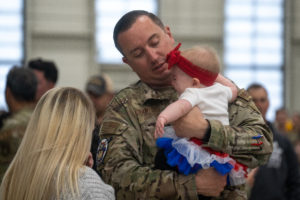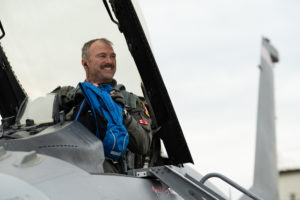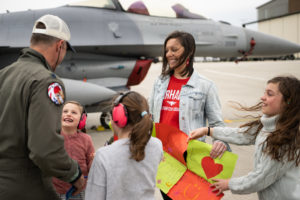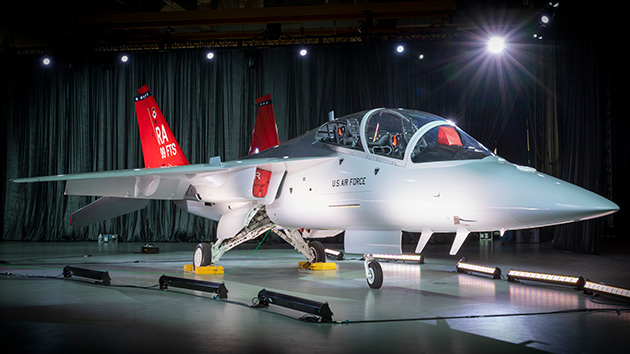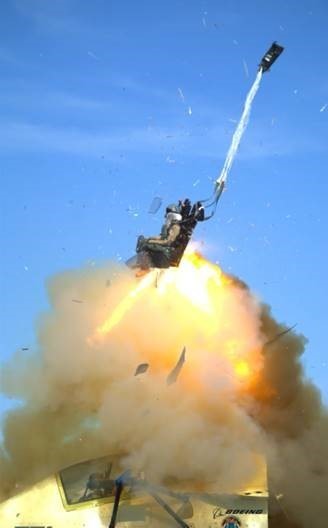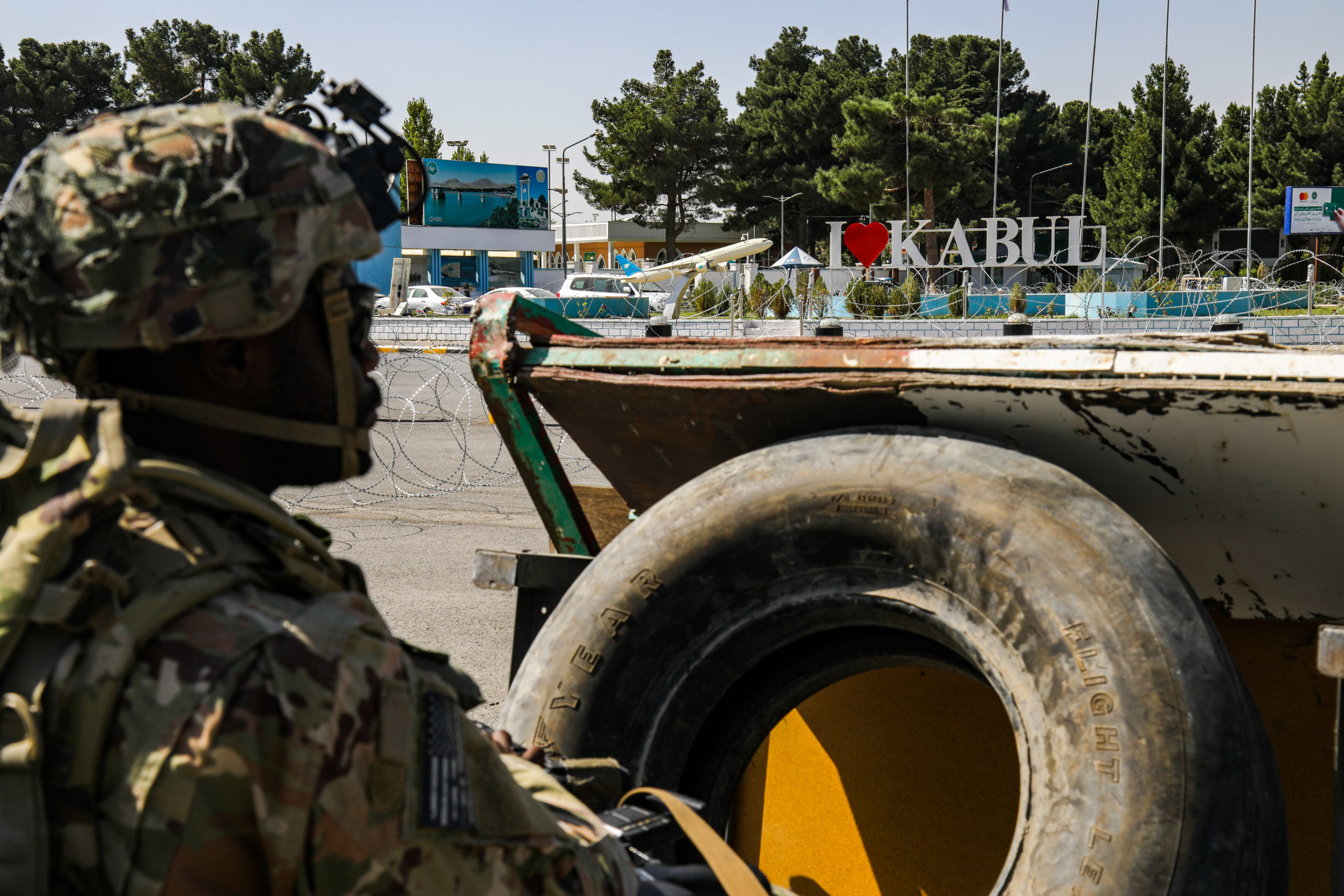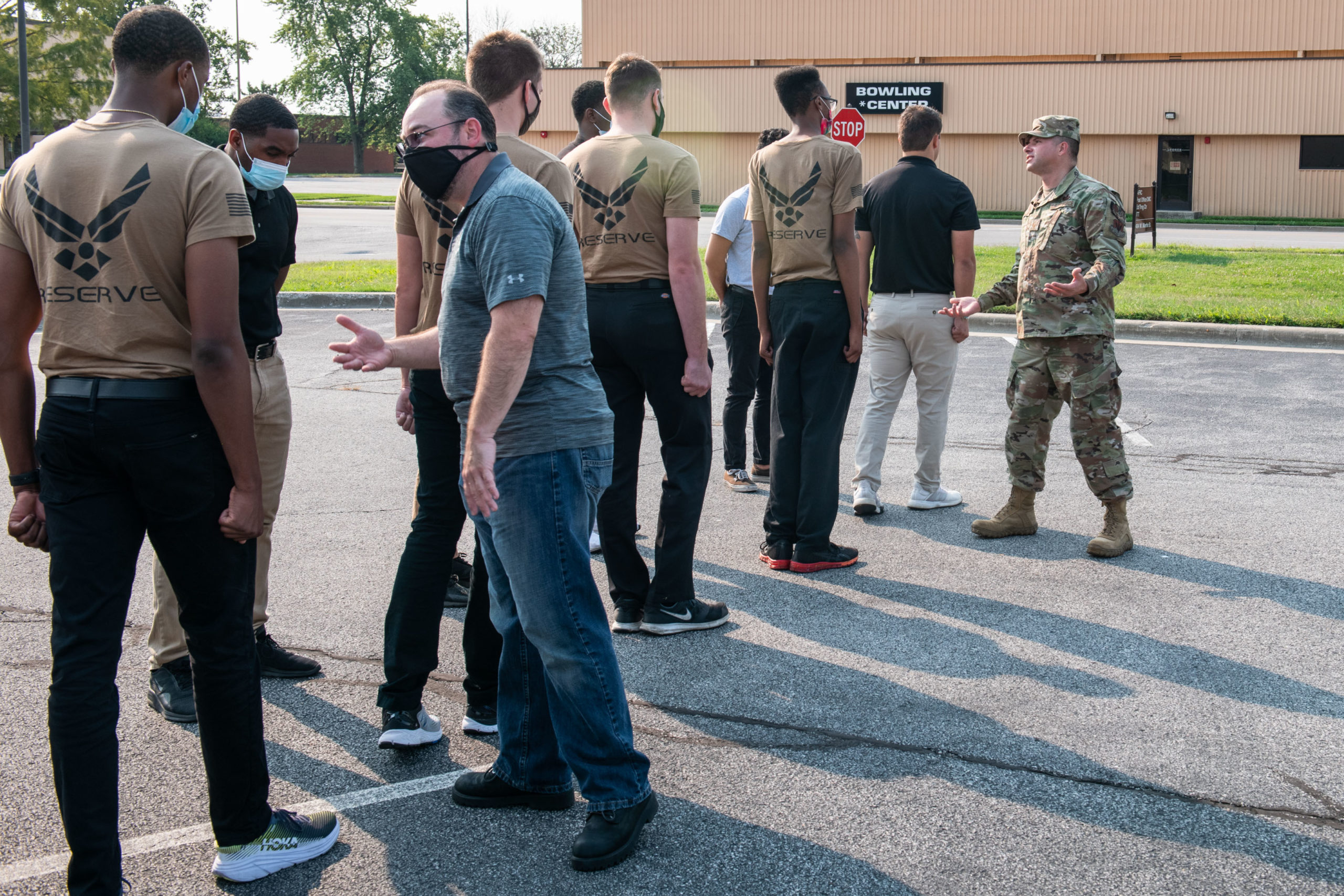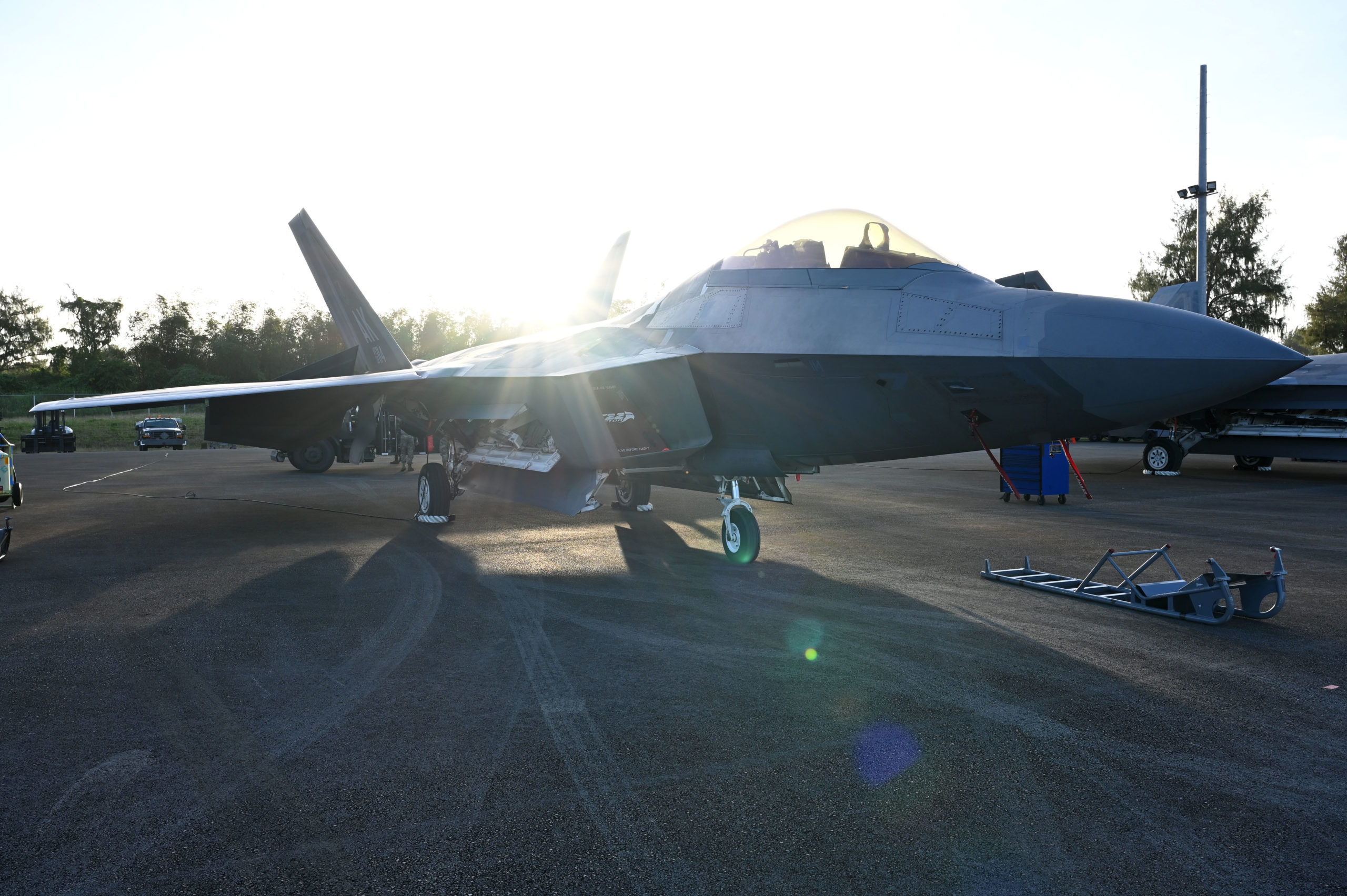The 2023 AFA Warfare Symposium held March 6-8 in Aurora, Colo., brought together dozens of the leading voices shaping the Air Force and Space Force of today and the future.
You can access the entire program via on-demand video and complete transcripts starting now, with every keynote session and panel discussion. All sessions are listed here.
Keynotes
- Secretary of the Air Force Frank Kendall “One Team, One Fight”
- Chief of Staff of the Air Force Gen. Charles “CQ” Brown, Jr. “Airmen in the Fight”
- Chief of Space Operations Gen. B. Chance Saltzman “Guardians in the Fight” and “Competitive Endurance”
- Gen. Thomas A. Bussiere, commander of Air Force Global Strike Command, “Global Strike”
Panel Discussions
- Senior Enlisted Advisor to the Chairman of the Joint Chiefs of Staff Ramón “CZ” Colón-López; Chief Master Sergeant of the Air Force JoAnne S. Bass; and Chief Master Sergeant of the Space Force Roger Towberman, “The Enlisted Imperative”
- Gen. Kenneth S. Wilsbach, Commander, Pacific Air Forces; Gen. James B. Hecker, U.S. Air Forces in Europe Commander; and Lt. Gen. Nina M. Armagno, Director of Staff, USSF, “Airmen & Guardians in Demand: Meeting the Need”
- Lt. Gen. John P. Healy, Chief of Air Force Reserve; Lt. Gen. Michael A. Loh, Director of the Air National Guard; Brig. Gen. Neil Richardson, Deputy Director of Operations, Strategic Deterrence and Nuclear Integration, Headquarters Air Mobility Command; and Maj. Gen. Clark J. Quinn, Deputy Commander Air Forces Central Command, “Building High-End Readiness: Deploying Under the Air Force Generation Model”
- Gen. B. Chance Saltzman, Chief of Space Operations; Gen. David W. Allvin, Vice Chief of Staff of the Air Force; Chief Master Sergeant of the Air Force Joanne S. Bass; and Chief Master Sergeant of the Space Force Roger A. Towberman, “Warfighting from the Homefront: Senior Leaders Perspective”
- Lt. Gen. Alexus G. Grynkewich, commander of Air Forces Central Command; Lt. Gen. Scott L. Pleus, deputy commander of U.S. Forces Korea; Maj. Gen. Derek France, commander of the Third Air Force; and Brig. Gen. Anthony J. Mastalir, commander of United States Space Forces Indo-Pacific, “Defending Forward Bases”
- Gen. Mike Minihan, commander of Air Mobility Command, and Gen. Duke Richardson, commander of Air Force Materiel Command, “Logistics on the Attack: The Build Up and the Delivery”
- Gen. David W. Allvin, Vice Chief of Staff of the Air Force; Gen. David D. Thompson, Vice Chief of Space Operations, “Joint Warfighting Requirements: The Forces Needed to Fight and Win”
- Andrew P. Hunter, the Assistant Secretary of the Air Force for Acquisition Technology and Logistics, and Maj. Gen. Steve Whitney, the Military Deputy of the Assistant Secretary of the Air Force for Space Acquisition and Integration “Answering the Warfighters’ Needs”
- Gen. John E. Hyten, USAF (Ret.), former Vice Chairman of the Joint Chiefs of Staff; Gen. Glen D. VanHerck, commander of U.S. Northern Command; and Lt. Gen. John Shaw, deputy commander of U.S. Space Command, “Evolving Threats: Protecting the Homeland”
- Col. Charles B. DeBellevue, USAF (Ret.), the highest scoring ACE of Vietnam War and last American ACE; Col. Lee Ellis, USAF (Ret.), Vietnam War POW (1967-1973); and Lt. Col. Gene Smith, USAF (Ret.), Vietnam War POW (1967-1973), “Lessons from Vietnam: 50 Years Later”
- Lt. Col. Elizabeth Blakeman, co-lead of Air Combat Command’s Sword Athena program; Kristen Christy, resilience trainer with Fortify the Force; and Maj. Bridget Pantaleon, Family Life Action Group, “United Forces and Families”
- Lt. Gen. Leah G. Lauderback, deputy chief of staff for intelligence, surveillance, reconnaissance and cyber effects operations; Lt. Gen. Jeffrey Kruse, director’s advisor for military affairs at the Office of the Director of National Intelligence; Maj. Gen. Gregory J. Gagnon, deputy chief of space operations for intelligence, “Threats, Targets, and Intelligence Advantage”
- Retired Maj. Gen. Kimberly Crider, former mobilization assistant to the Chief of Space Operations and Acting USSF Chief Technology and Innovation Office; Bill Torson, warfighting architect for Kessel Run; Col. Alan “Doc” Docauer, chief of command and control/intelligence, surveillance, and reconnaissance operations for Air Combat Command; Col. Frederick “Trey” Coleman, commander of the 505th Command and Control Wing, “The New Air Operations Center”
- Lt. Gen. Jim Slife, deputy chief of staff for operations; Lt. Gen. Brian S. Robinson, commander of Air Education and Training Command; Maj. Gen. Jeannie M. Leavitt, chief of safety for the Department of the Air Force, “Ready to Fight: Flying Hours, Flight Safety, and Training the Next Generation of Pilots”
- Brig. Gen. Jeffery Valenzia, DAF Advance Battle Management System Cross Functional Team lead; Col. Frederick “Trey” Coleman, commander of the 505th Command and Control Wing; retired Lt. Gen. Dave Deptula, dean of the Mitchell Institute for Aerospace Studies; Heather Penney, senior resident fellow at the Mitchell Institute for Aerospace Studies, “Optimizing C2 to Assure Kill Web Dominance”
- Lt. Gen. Tony D. Bauernfeind, commander of Air Force Special Operations Command; Lt. Gen. Alexus G. Grynkewich, commander of Air Forces Central Command; Lt. Gen. Michael A. Loh, director of the Air National Guard; Maj. Gen. Derek C. France, commander of the Third Air Force; Col. David Pappalardo, French Air and Space Attaché, “Agile Combat Employment: Are We Ready?”
- Retired Lt. Gen. David A. Deptula, dean of the Mitchell Institute for Aerospace Studies; Gen. Mark D. Kelly, commander of Air Combat Command; Lt. Gen. Stephen N. Whiting, commander of Space Operations Command; and Lt. Gen. Alberto Biavati, Italian Air Force Operational Forces Commander, “Every Threat a Target”
Industry Panels
- Maj. Gen. R. Scott Jobe, director of plans, programs, and requirements for Air Combat Command; Brig. Gen. Dale R. White, program executive officer for fighters and advanced aircraft; David Alexander, president of the aircraft systems group for General Atomics Aeronautical Systems Inc.; and Mike Benitez, director of product for Shield AI, “Advancements in Collaborative Combat Aircraft CONOPs”
- Willy Andersen, vice president of multi domain-special programs and capabilities at Boeing’s Phantom Works; Jon Norman, vice president of air power, requirements and capabilities at Raytheon; and Doug Young, vice president and general manager for strike programs for Northrop Grumman, “Global Strike”
- Chad Haferbier, vice president and division manager for multi-domain operations of Leidos; Lance Spencer, client executive vice president for AT&T Global Public Sector; Joseph Sublousky, vice president for joint all domain command and control at SAIC; and Col. Frederick “Trey” Coleman, commander of the 505th Command and Control Wing, “Operationalizing ABMS-JADC2”
- Maj. Gen. Heather Pringle, commander of the Air Force Research Laboratory; Andre McMillian, vice president of sustainment operations for military engines at Pratt & Whitney; Brian Morrison, vice president and general manager of cyber systems at General Dynamics; and David Tweedie, general manager of advanced products at GE Edison Works, “Transitioning to a Wartime Posture Against a Peer Competitor”
- Willy Anderson, vice president of Boeing’s Phantom Works; Renee Pasman, vice president of integrated systems for advanced development programs at Lockheed Martin’s Skunk Works; and Gregory Simer, vice president at Northrop Grumman, “Defining the Next-Generation Air Dominance Family of Systems”
- Brig. Gen. Luke C. G. Cropsey, the Air Force’s program executive officer for command, control, communications, and battle management; Elaine Bitonti, vice president and general manager of connected battlespace and emerging capabilities mission systems for Collins Aerospace; Dan Markham, director for Joint All Domain Operations / Advanced Battle Management System in Lockheed Martin’s Skunk Works division; retired Lt. Col. Ron Fehlen, vice president and general manager for Air Force and Space Force programs at L3Harris, “Operationally Focused ABMS”
- Jason Brown, professional services manager for Google Public Sector; Joel Nelson, senior director for strategy and business development for Space Systems at L3Harris; Kay Sears, vice president and general manager for space, intelligence and weapon systems for Boeing Defense, Space & Security; Lt. Gen. DeAnna M. Burt, deputy chief of space operations for operations, cyber, and nuclear, “Defining Resilient and Effective Space Order of Battle and Architectures”
- Ryan Bunge, Vice President & General Manager Resilient Networking and Autonomy Solutions, Collins Aerospace; Thom Kenney, Technical Director, OCTO, Google; Brad Reeves, Director for C4I Solutions, Elbit America, “Defining Optimized Resilient Basing”
- Paul Ferraro, president of air power at Raytheon Technologies; Dave Richards, senior director of precision weapon systems and precision targeting solutions at Elbit America; Mike Shortsleeve, vice president of strategic development at General Atomics Aeronautical Systems; Maj. Gen. R. Scott Jobe, director of plans, programs, and requirements for Air Combat Command, “Achieving Moving Target Engagement at Scale”
